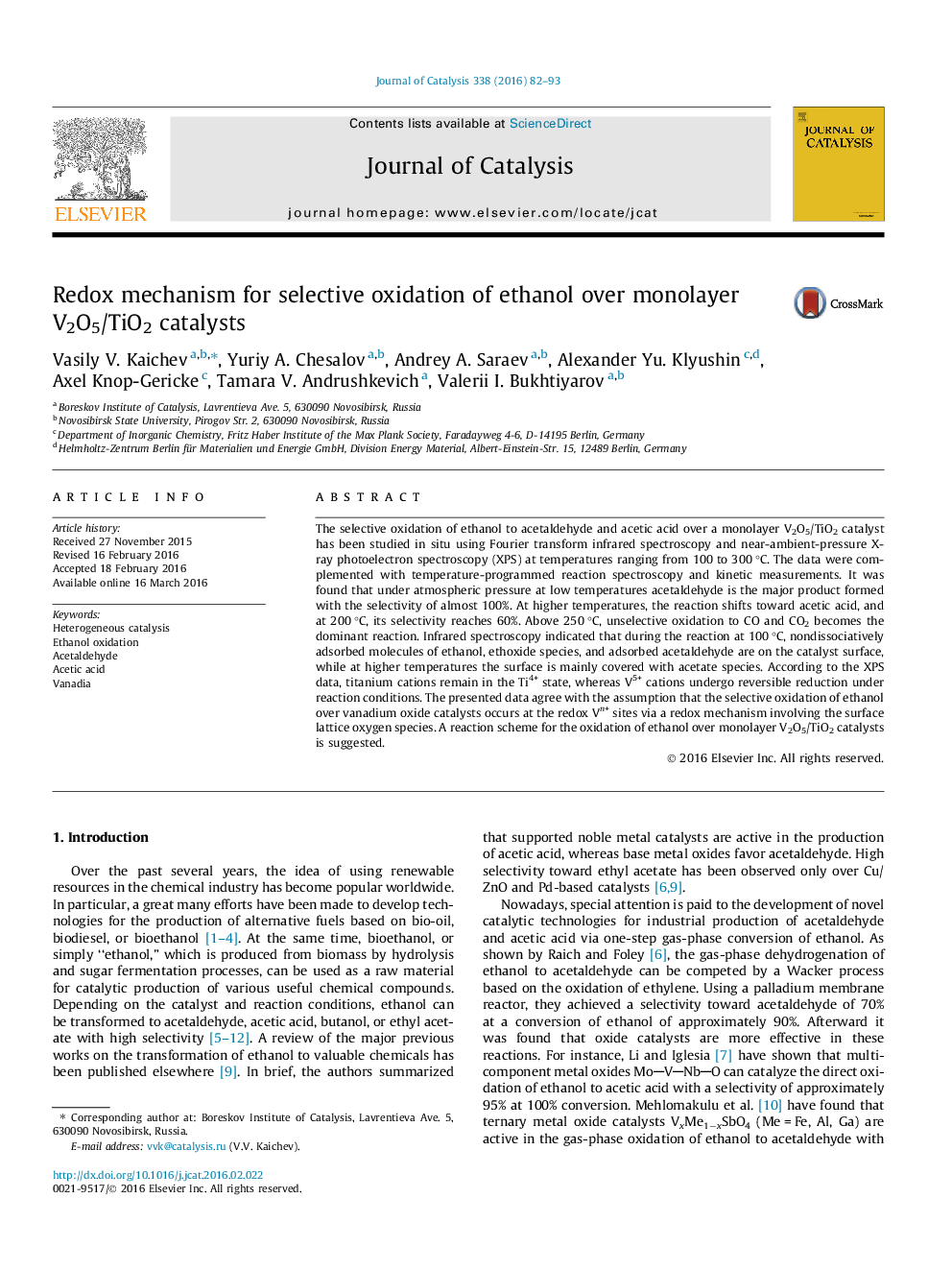| کد مقاله | کد نشریه | سال انتشار | مقاله انگلیسی | نسخه تمام متن |
|---|---|---|---|---|
| 60620 | 47540 | 2016 | 12 صفحه PDF | دانلود رایگان |

• The oxidation of ethanol over a monolayer V2O5/TiO2 catalyst was examined.
• The reaction involves reversible reduction of V5+ cations, whereas titanium cations remain in the Ti4+ state.
• At 100–150 °C: acetaldehyde is the main product; at higher temperatures: the reaction shifts toward acetic acid.
• The oxidation of ethanol to acetaldehyde proceeds via the classical Mars–van Krevelen mechanism.
• The production of acetic acid from acetate species proceeds only after the partial oxidation of the catalyst.
The selective oxidation of ethanol to acetaldehyde and acetic acid over a monolayer V2O5/TiO2 catalyst has been studied in situ using Fourier transform infrared spectroscopy and near-ambient-pressure X-ray photoelectron spectroscopy (XPS) at temperatures ranging from 100 to 300 °C. The data were complemented with temperature-programmed reaction spectroscopy and kinetic measurements. It was found that under atmospheric pressure at low temperatures acetaldehyde is the major product formed with the selectivity of almost 100%. At higher temperatures, the reaction shifts toward acetic acid, and at 200 °C, its selectivity reaches 60%. Above 250 °C, unselective oxidation to CO and CO2 becomes the dominant reaction. Infrared spectroscopy indicated that during the reaction at 100 °C, nondissociatively adsorbed molecules of ethanol, ethoxide species, and adsorbed acetaldehyde are on the catalyst surface, while at higher temperatures the surface is mainly covered with acetate species. According to the XPS data, titanium cations remain in the Ti4+ state, whereas V5+ cations undergo reversible reduction under reaction conditions. The presented data agree with the assumption that the selective oxidation of ethanol over vanadium oxide catalysts occurs at the redox Vn+ sites via a redox mechanism involving the surface lattice oxygen species. A reaction scheme for the oxidation of ethanol over monolayer V2O5/TiO2 catalysts is suggested.
Figure optionsDownload high-quality image (63 K)Download as PowerPoint slide
Journal: Journal of Catalysis - Volume 338, June 2016, Pages 82–93